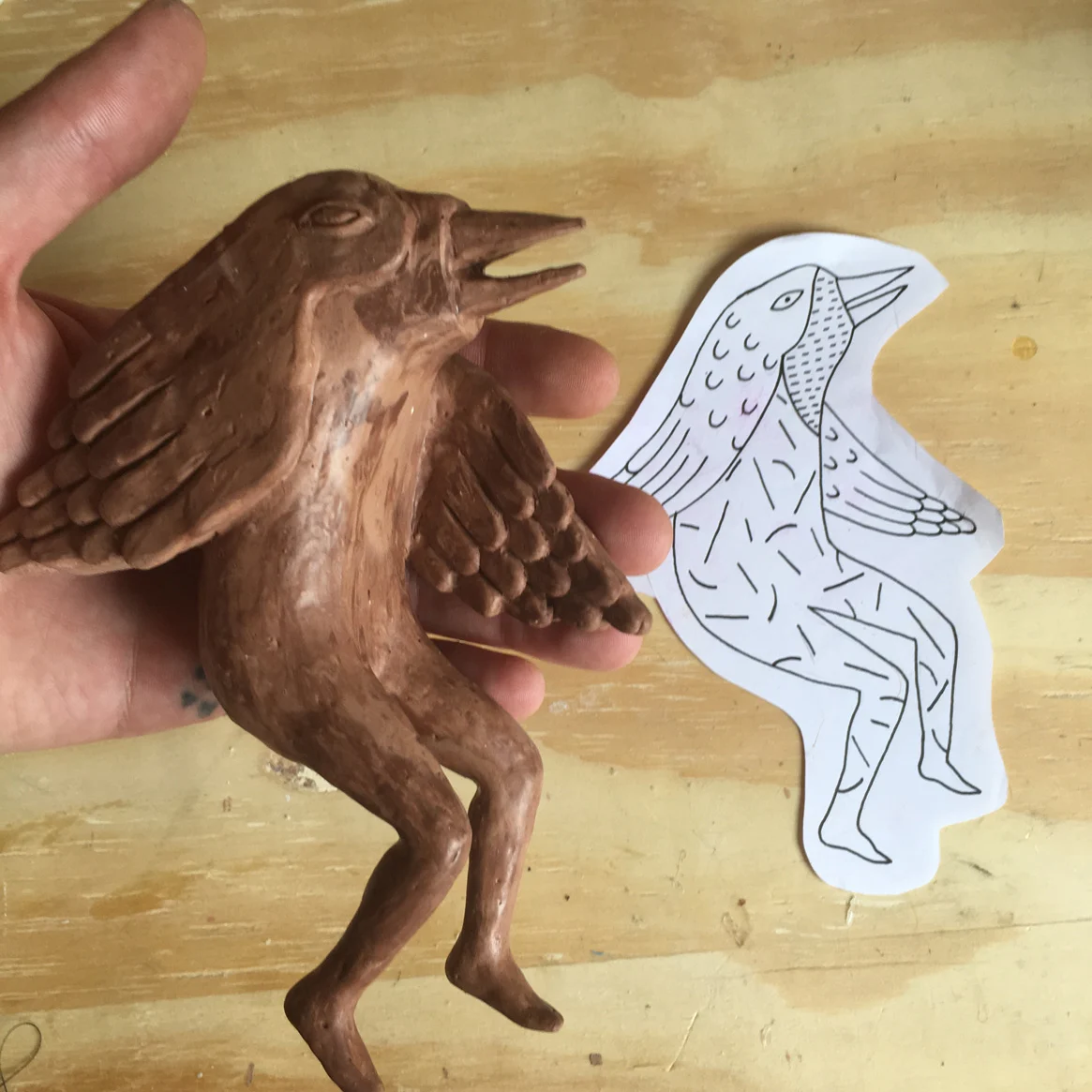

Second only to their son, Otto, Toco-Oco is Lara and Guilherme’s greatest collaboration. Under this playful name they dream up fantastical creatures which they turn into curious doll-sized sculptures. Writer Alix-Rose Cowie meets the duo to talk about the figurines they deftly craft from their studio in Brazil.
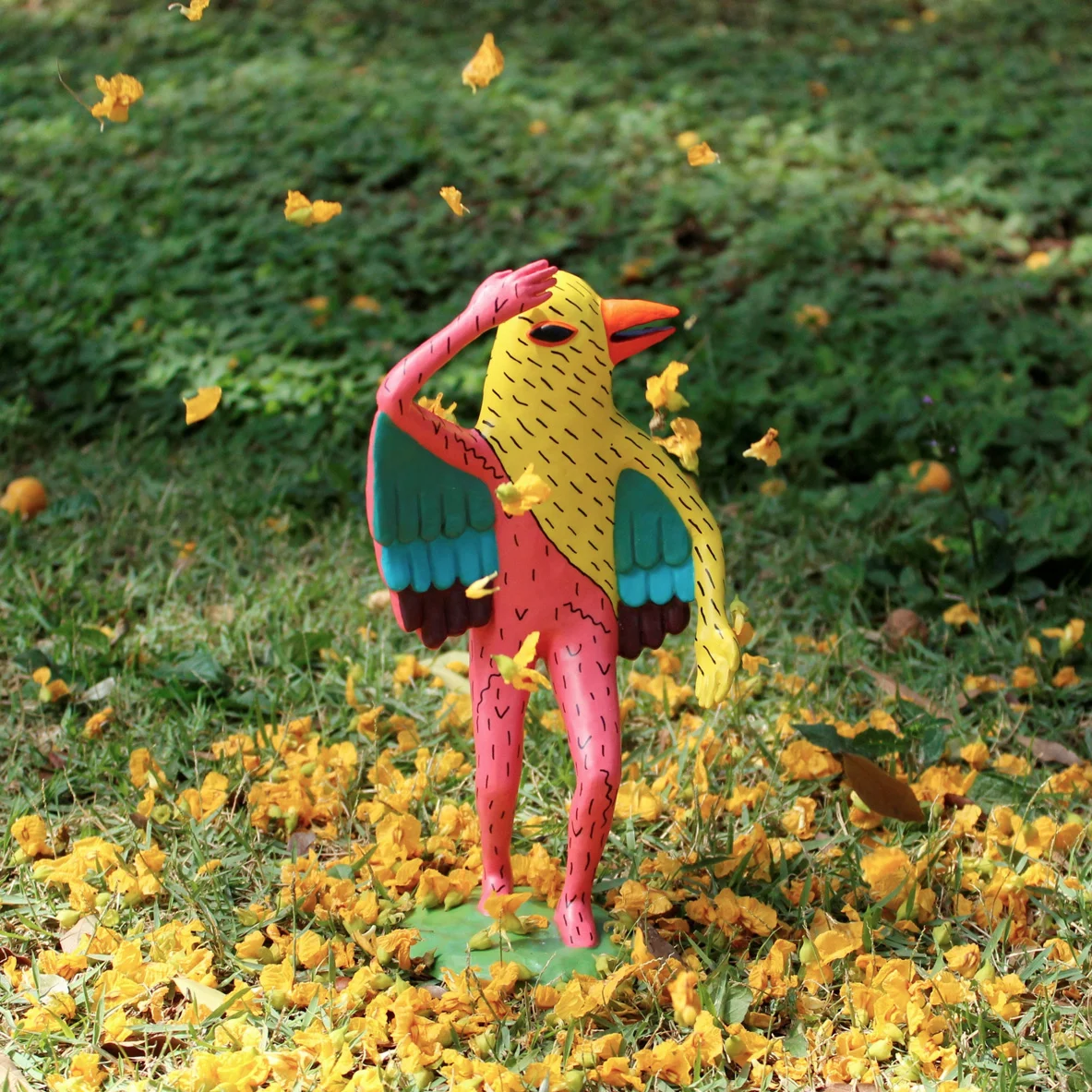
Like many people did once upon a time, Lara Alcântara and Guilherme Neumann met in a bar. As they got talking they found out they were both studying fine art at the same university in São Paulo. “It was a somewhat mismatched encounter, until we realized we had so much in common that it was impossible not to be together as a couple,” Lara says. Their first conversation has never really ended. Through discussions on art theory and the production of ideas they decided to work together as a duo. Today as they work happily in their studio in São José dos Campos together, they’re still chatting all day about work, politics and art-making.
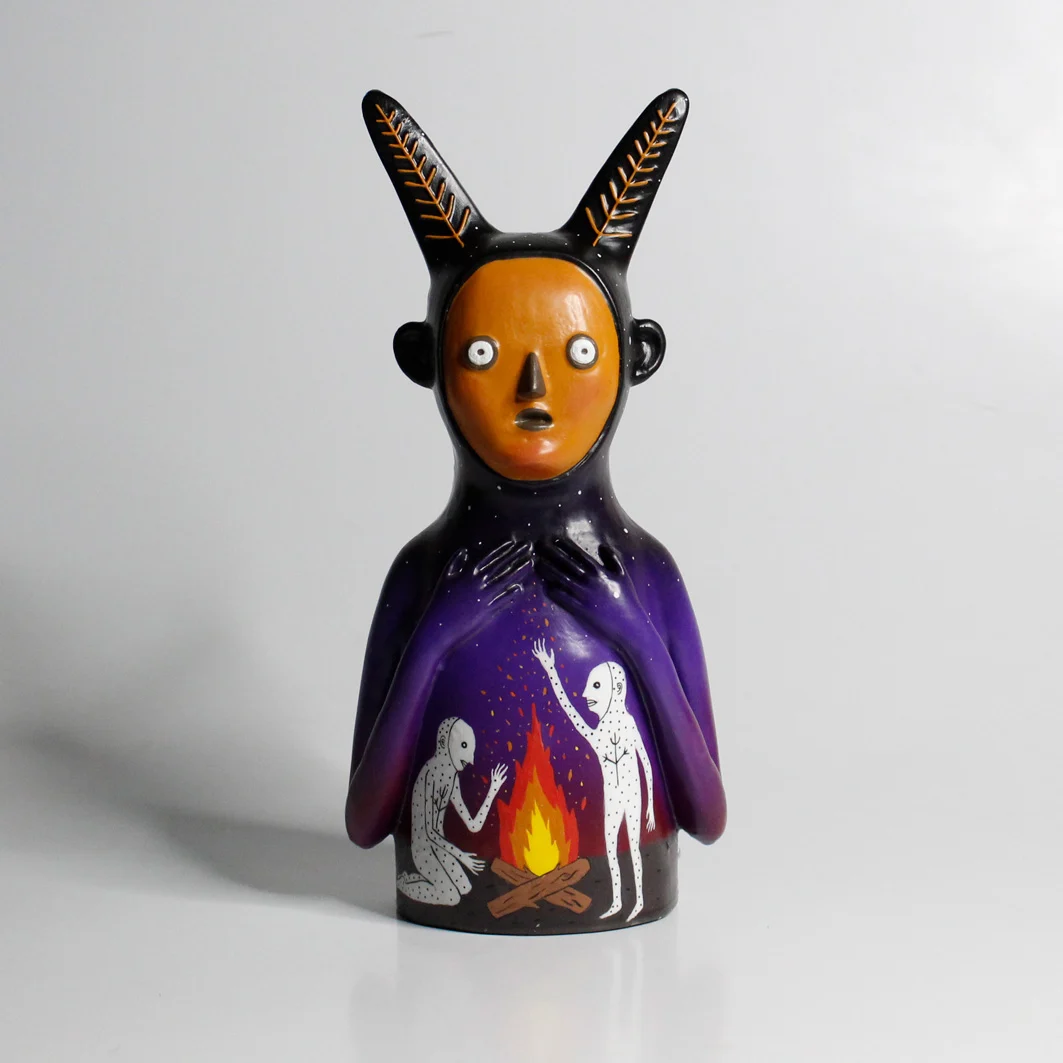
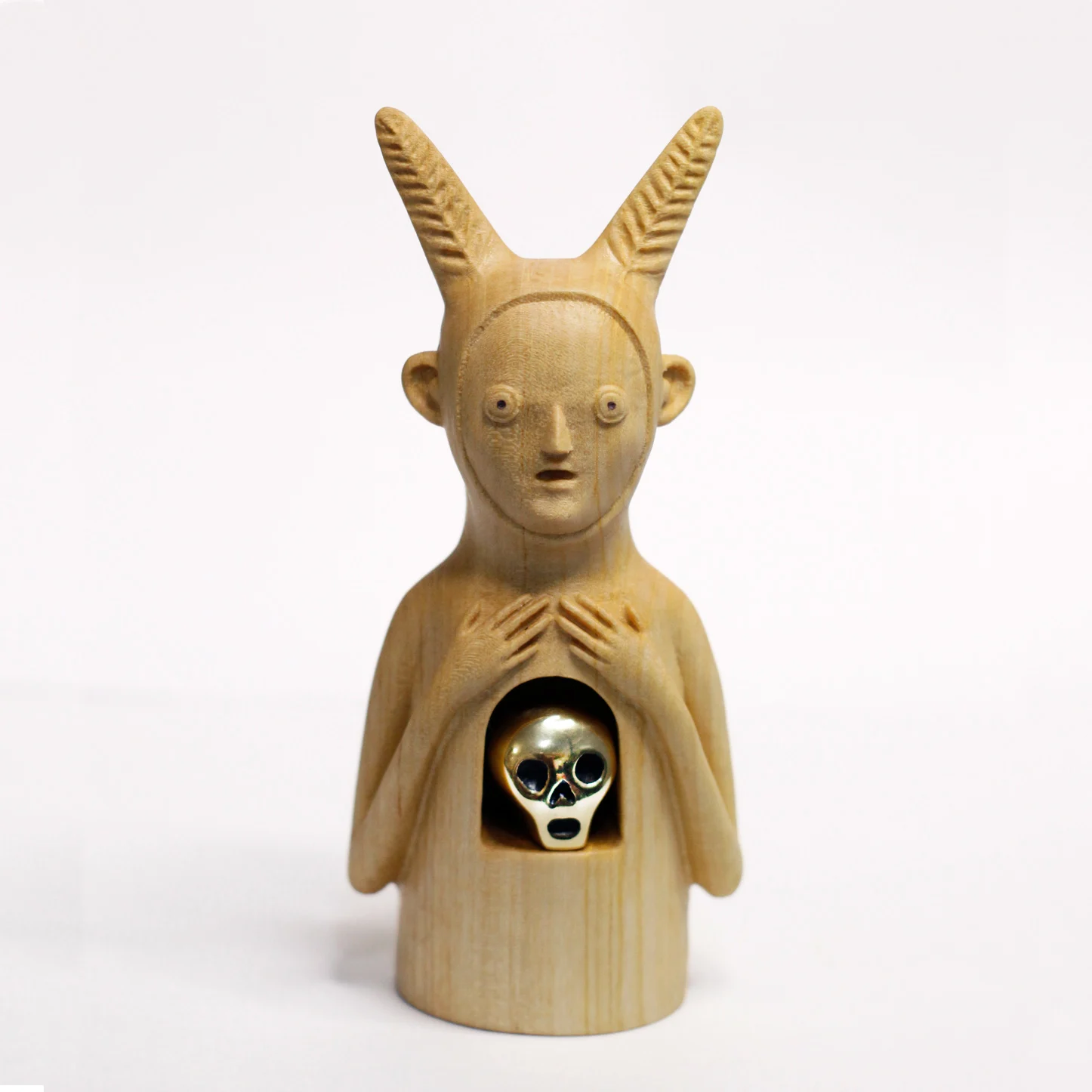
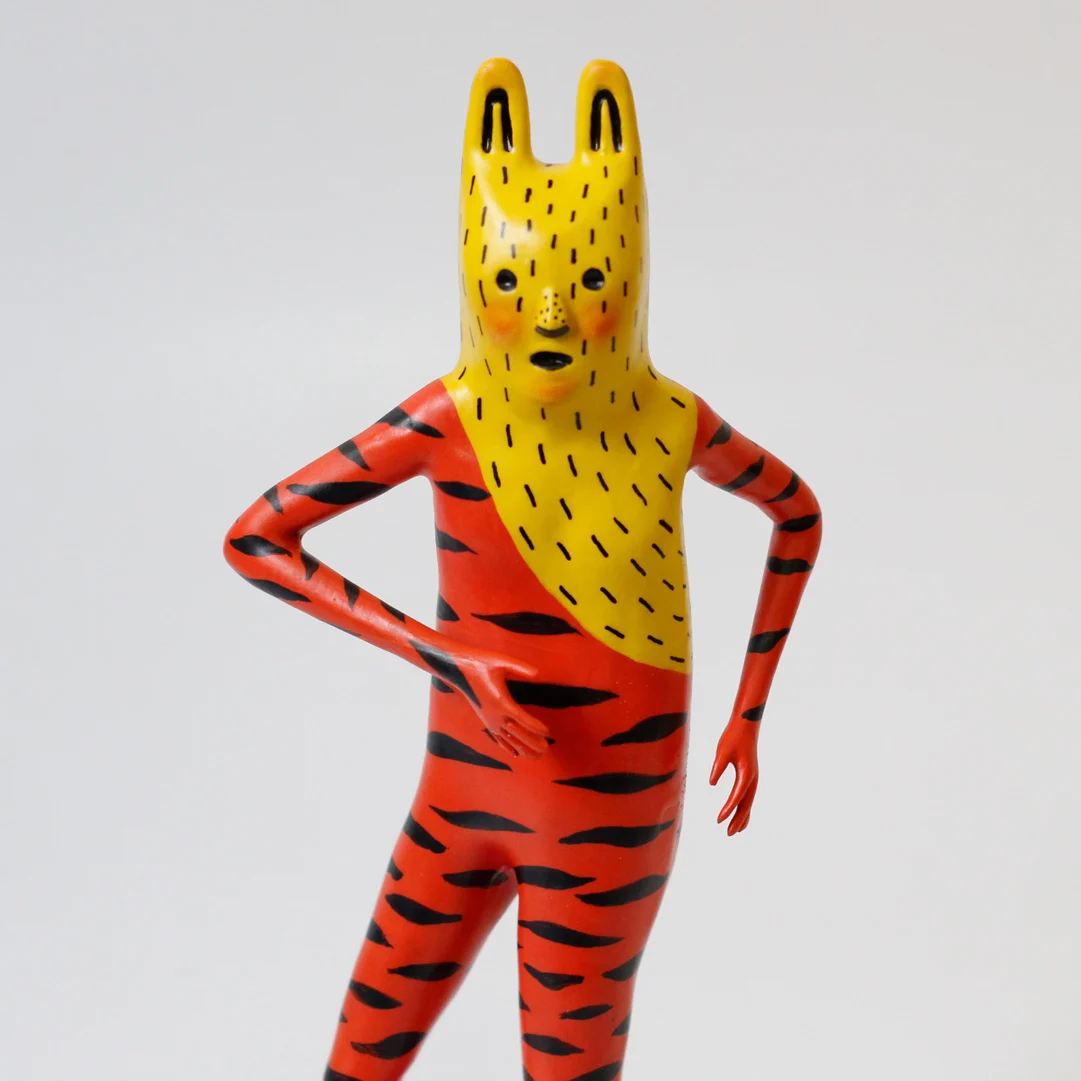



Toco-Oco sculptures carry Lara and Guilherme’s profound thoughts and gigantic questions about human existence in their clay frames.
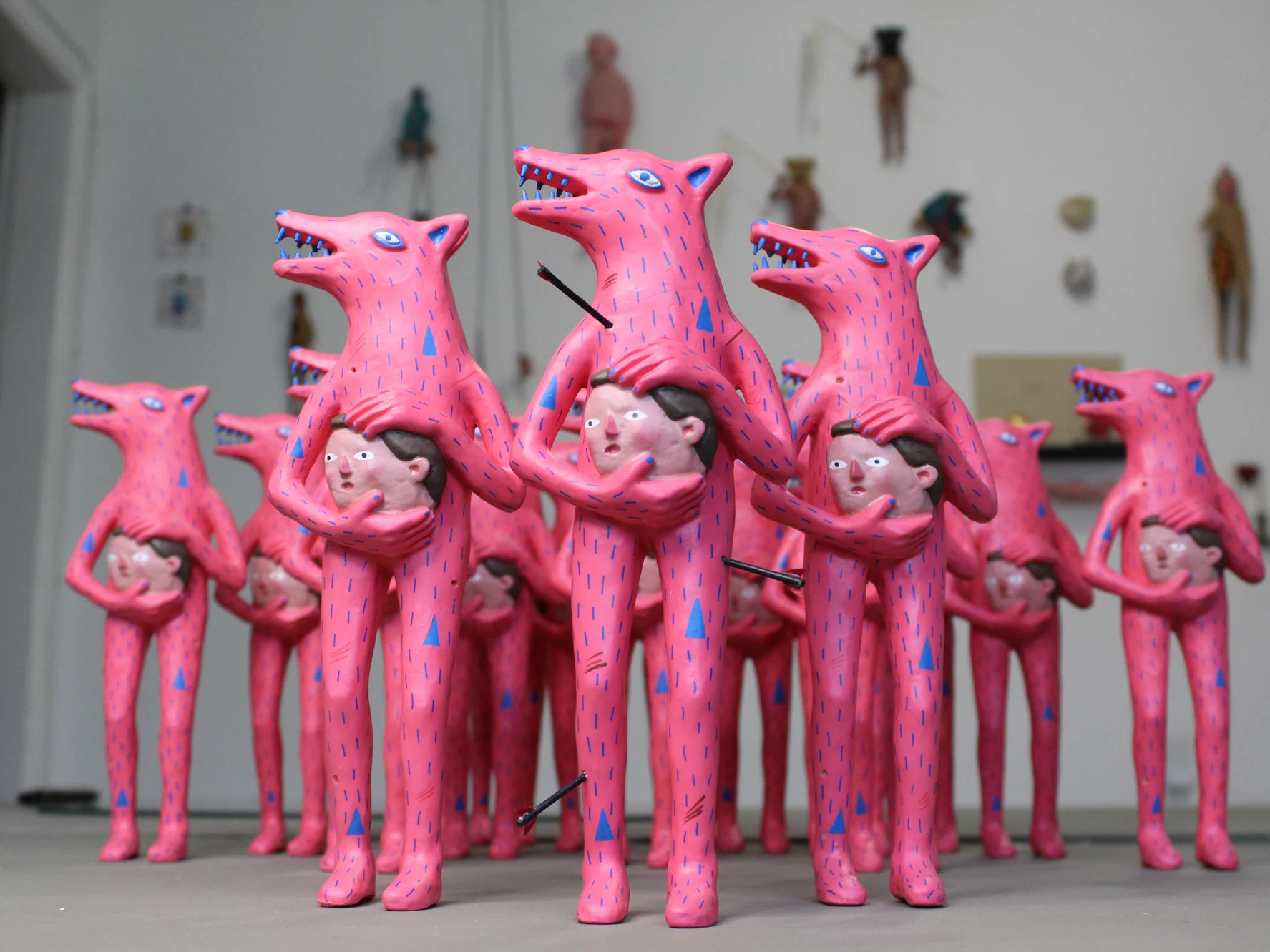
Second only to their son, Otto, Toco-Oco is Lara and Guilherme’s greatest collaboration. Under this playful name they dream up fantastical creatures which they turn into curious doll-sized sculptures. In Portuguese, “Toco” means stomp – their figures were initially aimed at children – and “Oco” means hollow, representing the potential to contain an entire imagination or a womb capable of generating life. They wanted a name that was phonic, philosophical and made up of two parts like their partnership.

Toco-Oco creatures live on the border between heaven and earth, between the human and the divine.
Toco-Oco creatures live on the border between heaven and earth, between the human and the divine. They’re both animalistic and supernatural. “It is a world very similar to ours,” they say, “full of injustices, but full of hope.”



Guilherme grew up close to nature in the coastal Brazilian city of Ubatuba. In contrast Lara was brought up in the cosmopolitan metropolis of São Paulo. One aspect of their work is contemplating the urbanite’s need for a connection to nature. “Our work has reverence for the mystical, natural and spiritual; trying to rescue this greater connection,” they say.
Our work has reverence for the mystical, natural and spiritual; trying to rescue this greater connection.

Like scribbly tattoos, there are often markings on the bodies of Toco-Oco figures. These came from an urge they had to go back to the purity of drawing free as they did in childhood. Over time these doodles began to represent wounds, scars, skin diseases or ornamentation that adds to the otherworldliness of the characters.

The figurines are individually hand-crafted from materials like wood, resin, fabric, ceramics and wax. But they’re also imbued with myth and symbolism. Each has its own narrative. Their sculpture Future Fire is a creature with a slender blue body and a speckled white mask. Strapped to its back with silken thread is a startled-looking human head hollowed out and used as a basket to carry kindling. Lugging the weight of the heavy head is a metaphor for a mind full of conflicts, questions, fears and desires. While the sticks symbolise hope for survival; coming to understand all those thoughts.
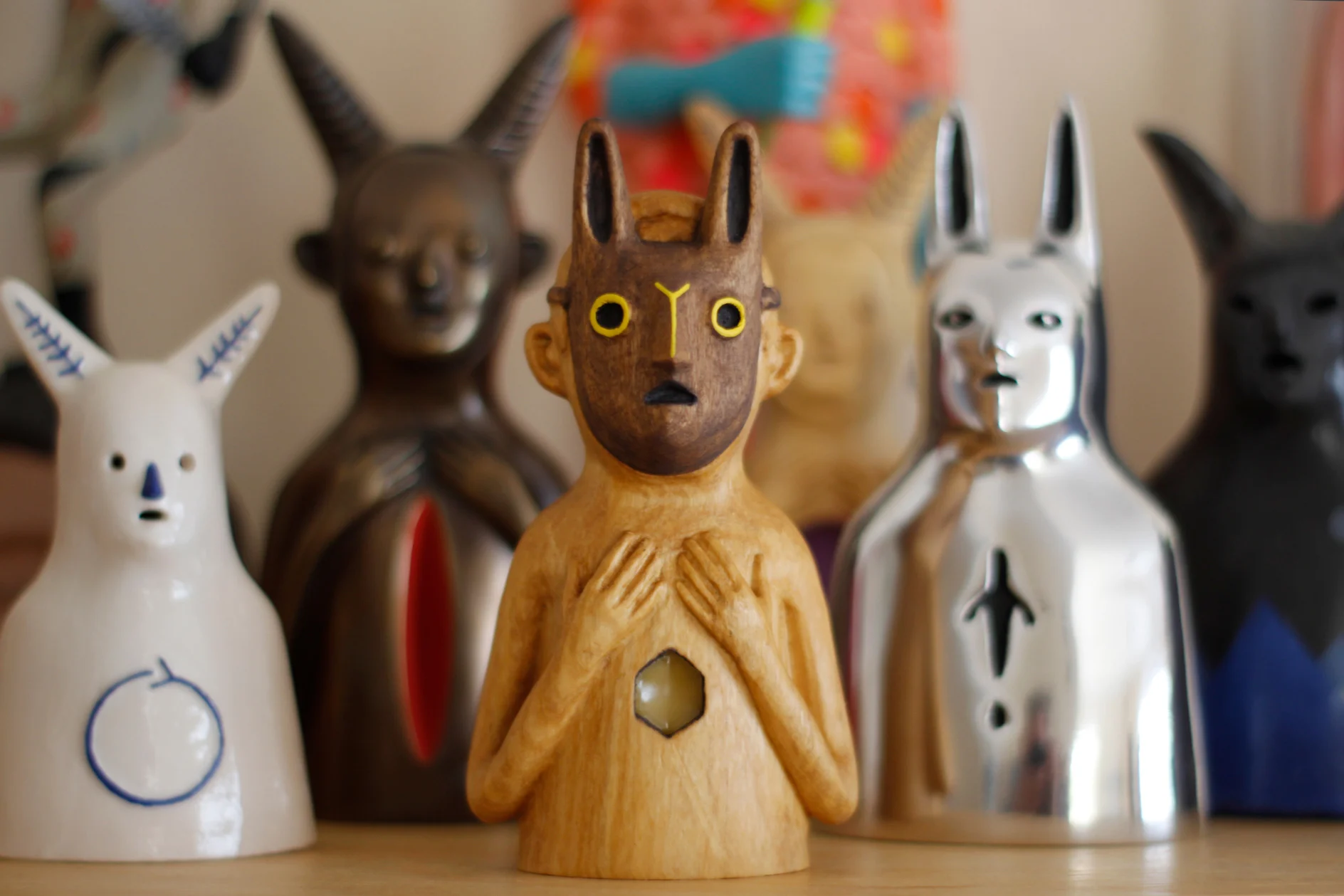
Though small enough to hold with one hand, and fragile if dropped, Toco-Oco sculptures carry Lara and Guilherme’s profound thoughts and gigantic questions about human existence in their clay frames. Sometimes these ideas are expressions of a shared global experience and other times they’re more autobiographical.
The Bad Pink Fox who holds a human head in its claws and has arrows shot through its body is about the endless battle between our animal instincts and our loftier human ambitions. Animals feature in much of Toco-Oco’s work: a human body will have a bird’s head and enormous beak or a boy will house an octopus in his belly. “They’re used to highlight our primitive instinct,” Lara and Guilherme say, “the wild, raw, ruthless, predatory, insatiable, powerful side which is repressed – or worse, is disguised – by the false idea of consciousness.”
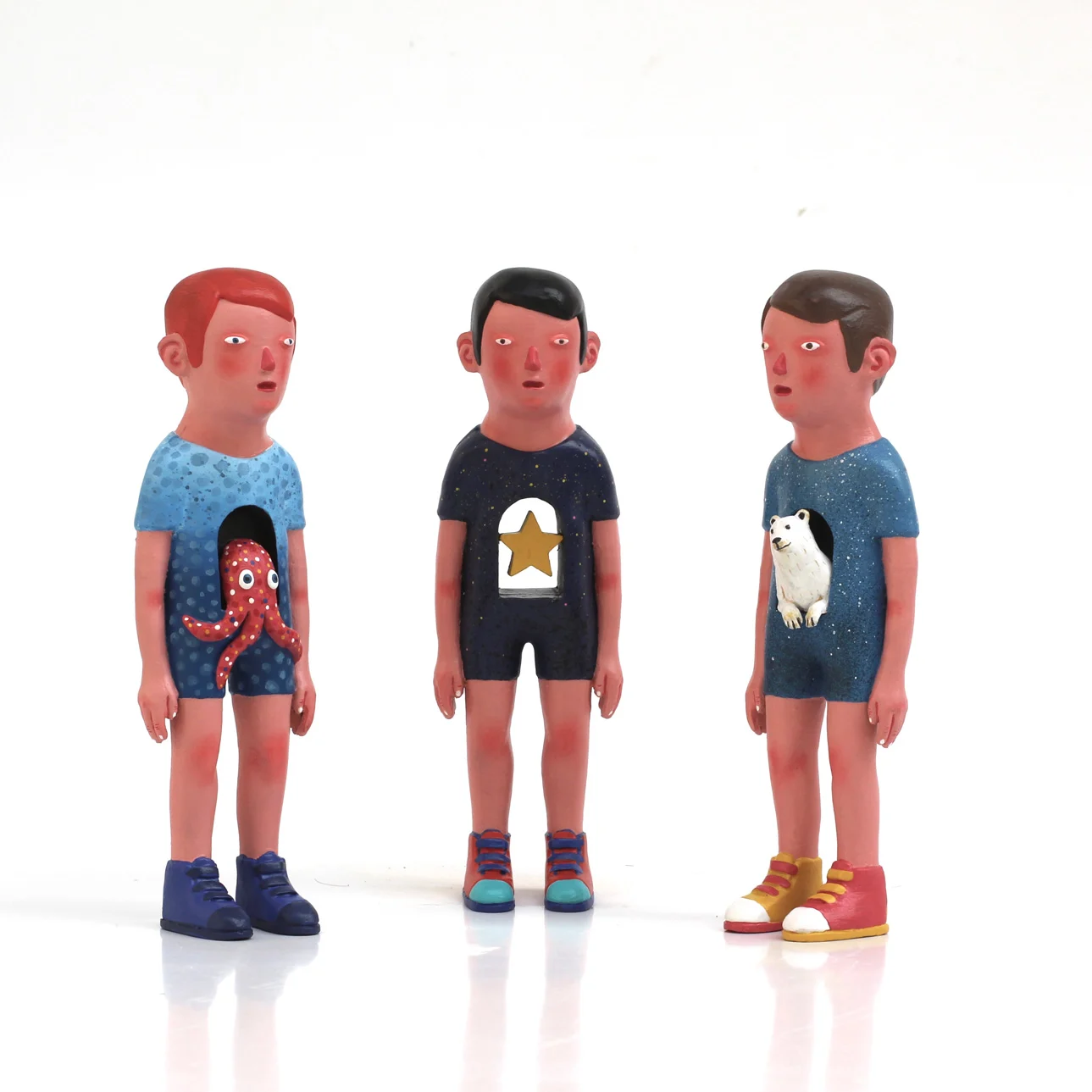
In the way that they tell tales, Lara and Guilherme are similar to folk artists and they’re immensely inspired by indigenous art of all origins whether Brazilian, African, Inuit or Nordic. “We are great admirers of popular art,” they say, “It is genuine poetry; the art of those who need to do it, regardless of recognition.”





